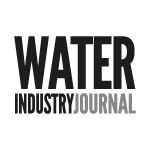Accurate location and addressing data make a huge difference to operations management, writes Chris Wilton, Sector Lead, Utilities, Ordnance Survey.
Last year, Ofwat published its Draft Determinations under the Price Review 2024, ushering in a new era for the water sector.
It not only promises a significant investment of £88 billion for the water sector over five years from 2025 but also puts pressure on water companies to provide a good service, introducing an opportunity to improve their infrastructure, services and operations.
The outcome of the Draft Determination consultation was published in December 2024, with changes following this year. Ahead of this, companies had multiple priorities to juggle including operational challenges, such as maintaining customer satisfaction, preparing for climate challenges and managing financial pressure. Now is the time for water companies to get ahead and identify how to leverage the increased investment and increase performance.
Data is critical
Data has an essential role to play in ensuring water companies are effectively able to manage operational challenges including maintaining quality customer service, ensuring continuous improvement and managing unexpected events.
Decisions in areas such as supply and demand and infrastructure rely on trusted location and addressing data. Having accurate data provides business with a big picture perspective and the tools needed to juggle these competing priorities.
Addressing data is all too much overlooked. Every home, area of land or utilities asset has an address that describes where it is.
But in the digital world, using location information in that form creates issues, as it’s not accurate enough, and can be subject to human error.
As the UK’s national mapping agency, at Ordnance Survey we work closely with water companies and see first-hand how decisions are being made every day on supply and demand, customer service, infrastructure and assets, compliance and more, all with a sense of location and addressing data.
The uncertainty created by not having the location tied to the digital world is significant and can have a fundamental impact on operations. In fact, in some instances, we’ve found companies working with over 80 million versions of four million addresses, which complicates efficient customer service and maintenance operations by requiring them to sift through multiple versions to identify the usable address.
A clear location reference unlocks greater insights
UPRNs (Unique Property Reference Numbers) help ensure every location in Great Britain can be identified reliably. With water companies being held to greater account by customers and under increased pressure, UPRNs act as a key reference to ensure that any location is clear and not subject to human error.
Accurate addressing is key for maintaining excellent customer service and minimising complaints, handling repairs quickly and ensuring correct billing. With increased investment in housing, the demand for water services will rise, making it essential to efficiently service the growing number of new homes.
UPRNs are especially valuable because they can be seamlessly integrated with other datasets used by water companies to enhance the understanding of specific areas or assets. For instance, by incorporating a topography layer, companies can see how an asset fits within the broader landscape, including its connections to nearby buildings, the layout of pipes, and whether it falls within a flood risk zone.
These insights help guide important decisions related to resource allocation, health and safety, and environmental impact, ultimately improving operational efficiency. This level of oversight will be extremely important with the introduction of Final Determinations.
Optimising customer service and operational efficiency with access to better location data will not only help the water and utilities sectors meet Ofwat’s standards but enable companies to adapt more effectively to future changes.
This means prioritising high-quality, accurate data. Without it, companies risk making costly changes based on unclear insights, potentially hindering progress instead of driving improvement.
Those companies that embrace the best datasets for decision-making now will reap the rewards. Enhanced location data, combined with greater collaboration between data-owning businesses, opens the door to a future where truly integrated services exist—laying the groundwork for smart cities and more sustainable urban environments. Getting these foundations right is essential for the sector to take hold of this unique opportunity.




